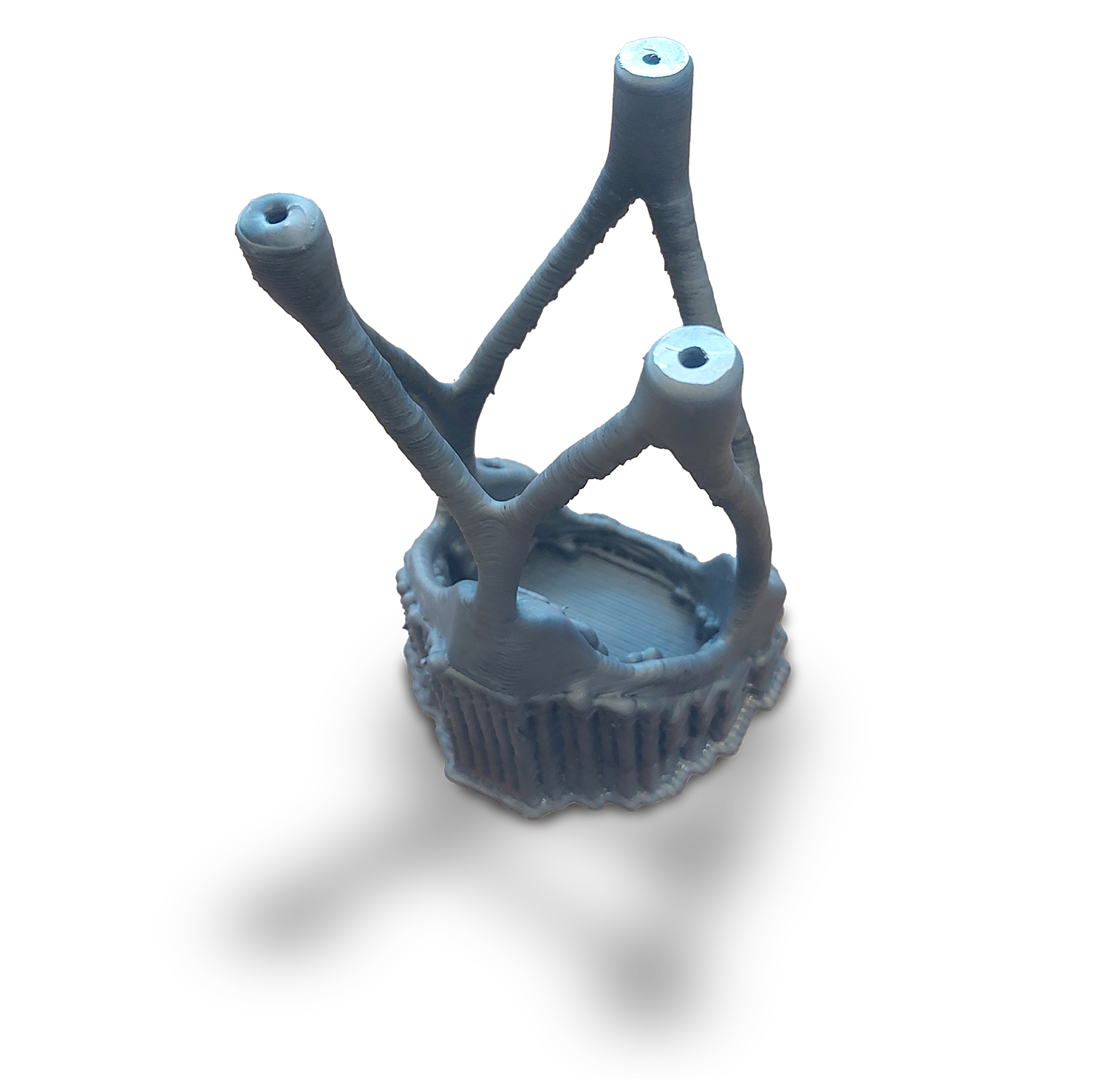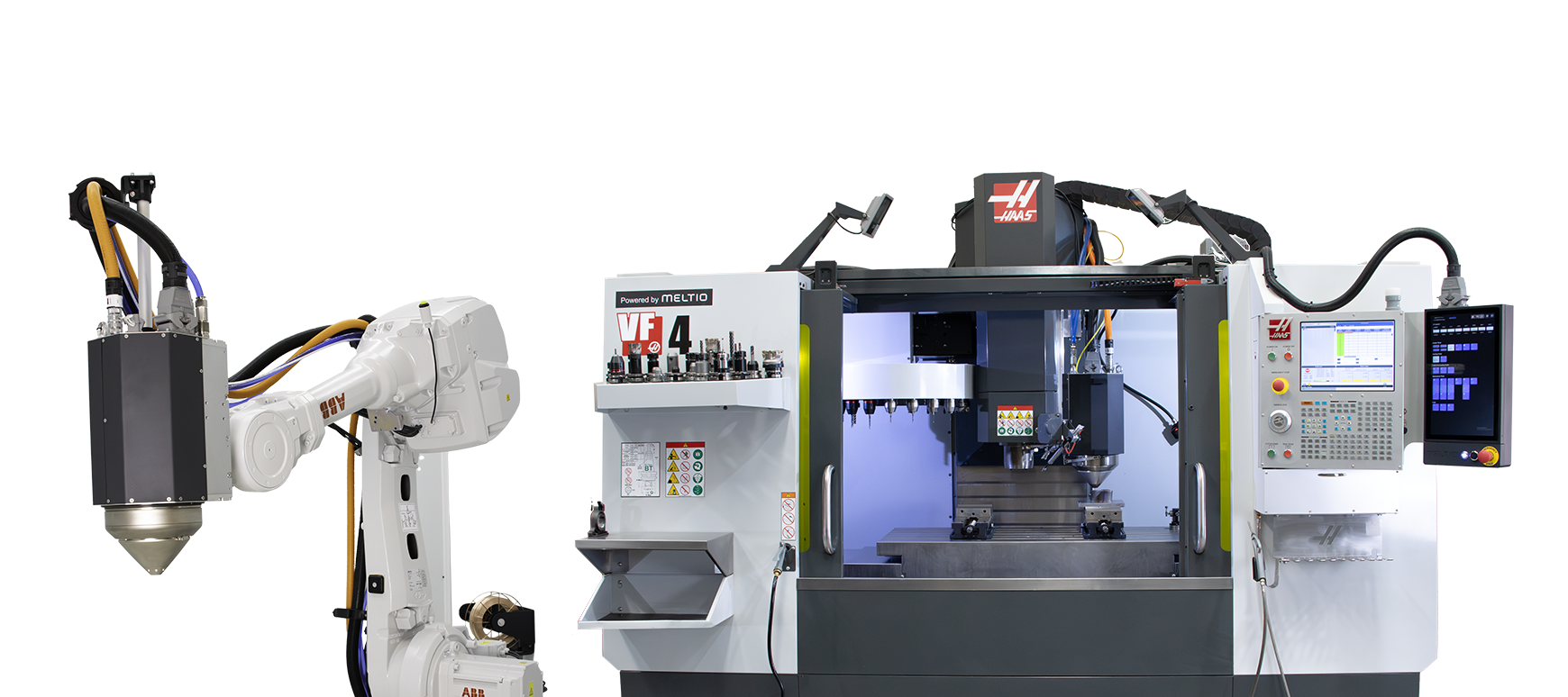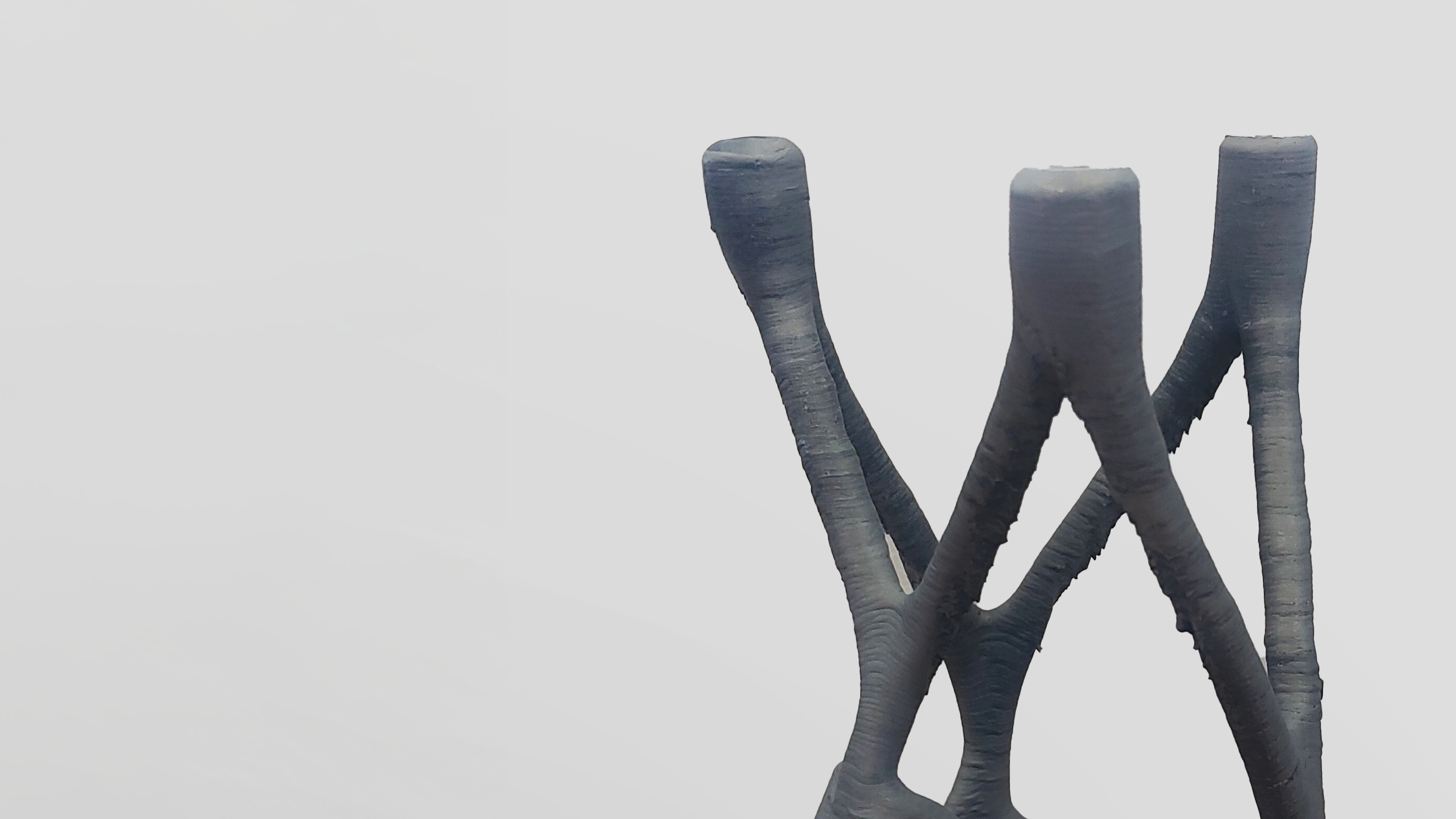Cutting costs and material
use in an aerospace project
Case study developed by Université de Bordeaux and
Institut de Mécanique et d’Ingénierie de Bordeaux
Cutting costs and material
use in an aerospace project
Case study developed by Université de Bordeaux and Institut de Mécanique et d’Ingénierie de Bordeaux
Researchers at the I2M laboratory specialize in Additive Manufacturing (AM), particularly metal 3D printing processes. Teachers in BUT graduate at the University of Bordeaux focus on design and manufacturing processes.
The core objectives include ensuring robust process control and advancing innovative approaches for learning and manufacturing. Working extensively with metallic AM systems, this team strives to enhance efficiency and reliability for a variety of applications.

Achieving same properties with less material
The aim was to design and fabricate a lightweight yet structurally robust tripod for aerospace that significantly reduces material usage while maintaining the necessary mechanical properties. The optimization process involved utilizing topology optimization algorithms that allowed for the creation of a complex geometry, removing excess material in non-critical areas without compromising the component’s strength.
This approach is highly beneficial for aerospace applications, where every gram of weight saved translates to improved fuel efficiency and performance.
How does Meltio’s W-LMD contribute?
The decision to adopt Meltio’s wire-laser metal 3D printing solution—specifically the new Meltio M600 wire-laser metal 3D printer—stems from its notable advantages in cost-effectively producing high-quality metal parts. By using wire rather than powder as the feedstock, the system increases material utilization, lowers costs, and promotes a safer working environment.
Additionally, the hybrid wire-laser approach provides strong mechanical properties and high deposition rates, making it particularly suitable for industrial applications. Research efforts also involve in-situ monitoring of surface machining and examining microstructural quality through post-mortem analyses.
Cost effectiveness
High quality part
Shorter lead times
Safer work environment
Strong mechanical properties
High deposition rates
Suitable industrial application
Microstructural quality
Meltio 3D Printing Solutions
Unlock the potential of metal 3D printing with Meltio. Your journey starts here.

Meltio 3D Printing Solutions
Unlock the potential of metal 3D printing with Meltio. Your journey starts here.

Optimized component’s topology
35% reduction in material use
10.5x times faster production time
System: Meltio M600
Sector: R&D & Aerospace
Meltio meets Class 1 laser safety standards, ensuring no harmful laser exposure to the operator.
Material: Stainless Steel
Printing Time: 5h 34min
Production time was 3 weeks

Adopting Meltio in the R&D sector
In the context of this research environment, Meltio’s platform cuts production costs by reducing material consumption and shortening lead times. From a scientific standpoint, the technology facilitates explorations into geometries and material combinations previously inaccessible, driving progress in functional gradient materials and lightweight structures.
This innovative use of additive manufacturing for topology optimization showcases how universities can push the boundaries of aerospace engineering, offering the potential for more efficient, cost-effective, and high-performance components in the aviation industry.

Want to know more about printed parts properties?
Want to know more about printed parts properties?
